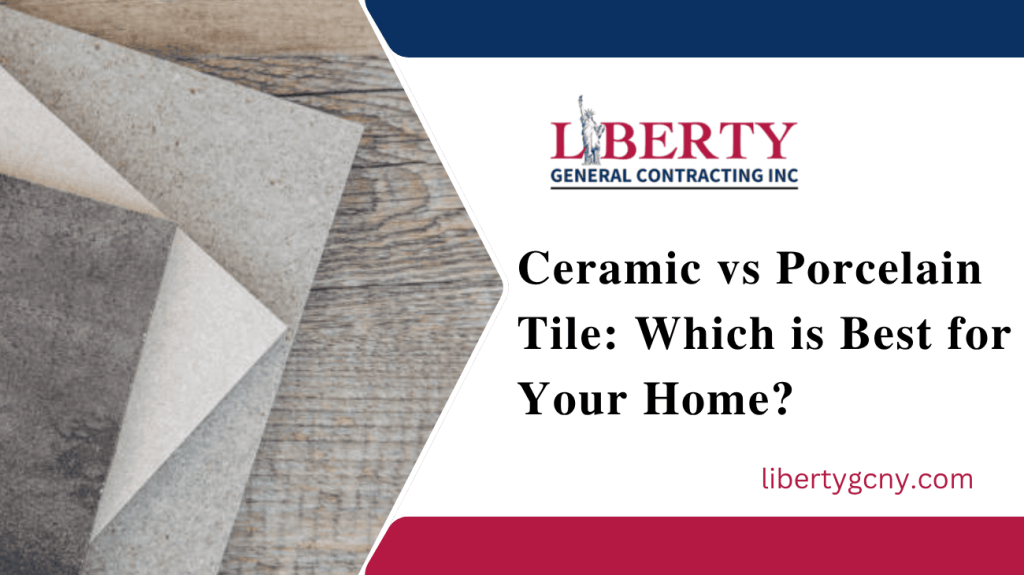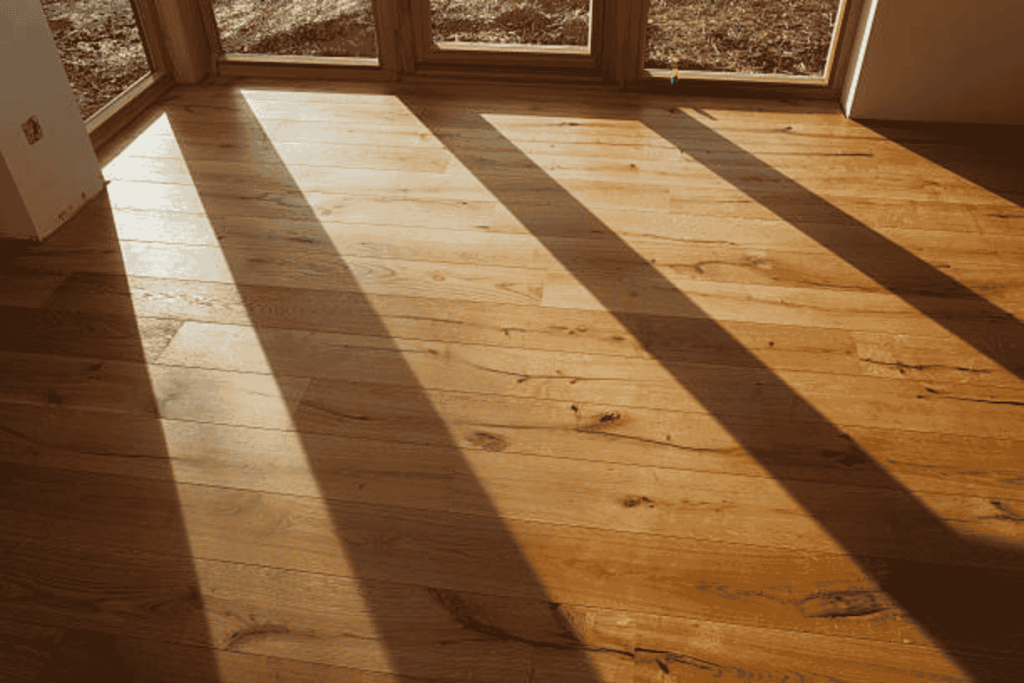When it comes to flooring options, tiles are among the most versatile, durable, and aesthetically appealing choices for homeowners. However, when choosing between ceramic vs porcelain tile, many homeowners find themselves unsure of which one to pick. The terms ceramic tiles and porcelain tiles are often used interchangeably, but they have distinct differences that can affect both the functionality and style of your space. In this guide, we’ll help you understand the key differences between porcelain vs ceramic tile, so you can make an informed decision on which is the best option for your next renovation project.
Table of Contents
What Are Ceramic and Porcelain Tiles?
Before diving into the differences between ceramic vs porcelain tile, it’s essential to understand what these two materials are and how they are made.
Ceramic Tiles
- Composition: Made from a mix of clay, sand, and other natural materials that are molded and fired in a kiln.
- Types: Generally available in glazed or unglazed finishes. Glazed ceramic tiles come with a glass-like coating that makes them water-resistant and increases durability.
- Uses: Ideal for low to moderate traffic areas such as residential bathrooms, kitchens, and walls.
Porcelain Tiles
- Composition: Made from finer clay and fired at higher temperatures than ceramic tiles. This process makes them denser and less porous.
- Types: Available in both glazed and unglazed forms. Glazed porcelain tiles have a durable surface, whereas unglazed varieties offer a natural, rustic appeal.
- Uses: Perfect for high-traffic areas like entryways, commercial spaces, and outdoor applications because of their durability and water resistance.

Key Comparisons: Ceramic vs Porcelain Tile
When deciding between Ceramic vs Porcelain Tile, there are several important factors to consider. Let’s compare these two types of tiles across various categories to help you make the best choice.
1. Durability
- Porcelain Tiles: Generally tougher and more durable compared to ceramic tiles. Their dense nature makes them more resistant to scratches, chips, and stains. This durability makes porcelain a suitable option for busy households and commercial settings.
- Ceramic Tiles: While still durable, they tend to be softer than porcelain. They are better suited for light to moderate traffic areas and should be handled with care to prevent damage.
2. Water Resistance
- Porcelain Tiles: Highly water-resistant due to their low water absorption rate. This quality makes them perfect for wet areas like bathrooms and kitchens, as well as for outdoor use.
- Ceramic Tiles: More porous than porcelain, which means they can absorb water if not properly sealed. While glazed varieties offer some water resistance, they are not as effective as porcelain.
3. Aesthetic Appeal
- Porcelain Tiles: Available in a wider variety of colors, patterns, and finishes. Innovations like digital printing allow for incredibly realistic designs, even mimicking natural stone or wood.
- Ceramic Tiles: While they come in various styles, their design options can be more limited compared to porcelain. However, they are beautifully versatile and can still add an aesthetic charm to a space.
4. Cost
- Porcelain Tiles: Generally more expensive due to the manufacturing process and materials used. Prices can vary widely depending on the brand and design.
- Ceramic Tiles: Often more budget-friendly and accessible for homeowners looking for a cost-effective flooring solution.
5. Installation
- Porcelain Tiles: Heavier and denser, which can make them more challenging to install. It’s often recommended to hire a professional for installation to ensure a properly leveled and aligned surface.
- Ceramic Tiles: Lighter and slightly easier to work with, making them more suitable for DIY installations.
6. Maintenance
- Porcelain Tiles: Easy to maintain with simple sweeping and mopping. They resist staining and do not require special cleaning products.
- Ceramic Tiles: Require periodic sealing, especially if they are unglazed. Regular maintenance includes sweeping and occasional scrubbing.
Porcelain Tile vs Ceramic Tile: What to Choose?
When it comes to choosing between Ceramic vs Porcelain Tile, your decision will depend on your space’s needs, your budget, and the look you want to achieve.
Homeowners’ Preferences
- Ceramic Tiles: Ideal for residential use, especially in less trafficked areas. They are commonly favored for their affordability and range of designs available.
- Porcelain Tiles: Typically chosen for their durability and versatility. Homeowners who want tiles that can withstand the test of time and heavy usage often lean towards porcelain.
Commercial Use
- In commercial settings, porcelain vs ceramic becomes a more critical comparison. High-traffic areas need flooring that can withstand wear and tear, making porcelain a more sensible choice.
Environmental Considerations
- Porcelain Tiles: Often produced with eco-friendly practices. They can contribute to LEED credits and are recyclable, making them a great choice for environmentally conscious consumers.
- Ceramic Tiles: While generally made from natural materials, the environmental impact can vary by manufacturer. Always check for certifications that guarantee eco-friendliness.
Trends and Innovations in Tile Design
Digital Printing Technology
- Both ceramic and porcelain tiles have greatly benefitted from advancements in digital printing technology. This innovation allows manufacturers to create stunning designs that reflect natural materials.
Large Format Tiles
- Increasingly popular, large format tiles are available in both ceramic and porcelain. They can create a sleek, modern look and reduce grout lines, which can simplify cleaning.
Textured & 3D Tiles
- Textured tiles add a tactile dimension to surfaces, making them a stylish choice for feature walls, backsplashes, and more. Available in both ceramic and porcelain, textured options can elevate an entire space.
Conclusion: Ceramic and Porcelain Tiles
Choosing between ceramic and porcelain tiles can seem daunting. However, understanding their unique properties, advantages, and disadvantages can help streamline your decision-making process.
Final Thoughts
- If you are looking for affordability and design versatility, ceramic tiles might be your best bet.
- For high durability and water resistance, especially in high-traffic areas, porcelain tiles are the clear winner.
Action Steps
- Assess Your Needs: Consider the function of the space, traffic levels, and the overall aesthetic you aim to achieve.
- Budget Considerations: Determine your budget and weigh the costs of both tile types against their benefits.
- Consult Professionals: If you’re unsure, consult a professional to help you navigate your options.
In conclusion, whether you lean towards ceramic or porcelain, both offer valuable benefits that can enhance your home or business space. With this comprehensive comparison of ceramic vs porcelain tile, you’ll be better prepared to make a choice that meets your needs and preferences.
FAQs about Ceramic vs Porcelain Tiles
Can I use ceramic tiles in a wet area?
It’s best to use glazed ceramic tiles for wet areas, but porcelain tiles are regarded as a better option for durability and water resistance.
Are porcelain tiles more expensive than ceramic?
Yes, porcelain tiles are generally more costly due to their manufacturing process.
How can I maintain my porcelain tiles?
Regular sweeping and mopping are sufficient for maintenance. Avoid using harsh chemical cleaners.
Final Takeaway
Both ceramic and porcelain tiles have their unique advantages. By considering factors such as your specific needs, budget, and design preferences, you can confidently decide on the best flooring solution for your project. With these insights into Ceramic vs Porcelain Tile, take the first step towards a beautiful and functional space.
Contact Liberty GCNY
Website: www.libertygcny.com
Phone: (347) 682-9840
Serving: Manhattan, Brooklyn, Queens, The Bronx, Westchester County, and Long Island.
Address:110-14 178th St, Jamaica, NY

